Let’s talk...
About problem solving: The siblings in the story faced a problem. We can ask our child: What was the problem? Who was able to solve it? Let’s share a problem we faced with each other and how we managed to solve it.
About sense of capability and promoting responsibility: We allow our child to choose a task in the house that they are responsible for implementing, and we can encourage them to do so.
About our child’s qualities: We can print our child’s hand on a paper, and write inside each finger our child’s qualities, characteristics, and strengths, then hang it on the refrigerator to give them a feeling of confidence and pride in their abilities
Let’s enrich our language...
We can examine the different drawings in the story: We can describe the drawings underground and above-ground and distinguish the similarities and differences between them. We can use terms like: wide, narrow, bright, dark, and others.
Let’s create...
Puppet: We can use old socks to make a puppet in the shape of Maurice the Mole. We can attach a nose and eyes to it, and dress it with a cloth hat. We can make whatever puppets we want for different animals.
Joint drawing:
We can draw a vertical or horizontal line on a paper and complete it each time in a different way. We can take turns with our child, to get a drawing, and we can colour the spaces in it together.
Let’s communicate...
We can have a meditation session and communication with nature. We can visit a nearby forest or garden and sit quietly and peacefully. We can also observe the different animals around us, smell the scents, and feel the wind blowing on our body.
Let's research...
We can search for animals that build their burrows underground, like the mole and others, and gather information about their characteristics and food. We can also watch a video about them on YouTube.
Let’s talk...
About Friendship: We can ask our child: What does the word friend mean? How do we become friends? Who is your friend? And why are you friends? What do you like to do with them? What are the things you are similar in, and what are the things you differ in? What distinguishes your friend? And what is the thing you love most about your friendship?
We can also share with our children and tell them about our experiences with childhood friends.
Let’s enrich our Language...
We follow the movement of the yellow and blue spots in the drawings: When do they get closer? When do they move away? When do they blend? When do they grow and when do they shrink? We ask our child for their opinion on this.
We pay attention to the opposites in the story’s vocabulary.
Let's communicate...
We can invite our friends for a nice visit to our home and spend an enjoyable time together.
Let’s create...
The artists used the printing technique. We can dip half a potato, or a flat eraser, or a piece of sponge in “gouache” paint and make a stamp. We can print shapes of different colours on paper, and we may complete their small details with the help of a pen.
Let’s talk...
About desires and feelings: The girl wanted a shiny bag decorated with planets, but she got another bag which made her angry. We can follow the angry child’s behavior in the story, and ask our child: How did the child express her anger? How did she behave with her classmates? How did her feelings change? Was the bag really terrible? How did her view of it change?
About similar experiences: We can talk to our child about experiences similar to the story. We can ask them: Has it happened that you strongly desired something, like the child in the story, and got something else? How did you feel? How did you behave?
Let’s enrich our language...
The story is rich with words and terms from the world of space, such as: planet, star, galaxy, space dust, Halley’s comet, spaceship, and many other terms. Let’s search for them in the story together.
Let's imagine...
The cardboard box became a spaceship; let’s imagine and complete the following sentence: This is not a box but it could be…..
Let’s create...
We can recycle some cardboard and shoe boxes at home, and make new toys such as: a spaceship, doll houses, a jewellery box, a car and others.
Let's research...
We can visit a museum that displays information about space, or watch a family movie about space.
Let's talk...
About pet care at home: Why is it important for the child? Who takes care of it, and how?
About the feelings of the child in different situations before and after Zaatar’s disappearance. What do her drawings tell us about her feelings?
About asking for help: When and whom do we turn to for help? Let’s remember situations where we supported our child.
About friendship: Zaatar is Dan’s friend. Who are our friends and what do we like to do with them?
Let’s enrich our Language...
We can suggest suitable names for a pet we want to raise. Why did we choose these names?
We can imitate the sounds of animals we know and learn their names like the meow of the cat and the bark of the dog, among others.
Let's play and have fun...
We can enjoy playing group games with our child, such as Blind Man’s Bluff, and the “Hot and Cold” game.
Treasure hunt: We can hide an object in one of the places in the house and give our child clues about the location, for example: there are plates and spoons there. We develop the child’s ability to describe by suggesting the use of different words, such as: above, inside, and describing objects and places. We then switch roles.
Let’s have fun together with role-playing games, such as: I’m the customer and you’re the seller, or the father and the child, and others.
Let's create...
We can prepare a comfortable and warm place for the household pet or neighborhood cats with our child.
We can allocate a place with our child to feed the neighbourhood cats. What food do we provide? Who do we share with from the neighbourhood?
Let's explore...
We can search for information about animals we want to learn about, and we can also spend an enjoyable day visiting the zoo.
Let’s talk...
About the title: We can ask the children what is meant by “nothing” in the gift box?
About the meaning and value of the gift: We can talk about the meaning of the gift, asking our children: Why do you think the cat wanted to give the dog a gift? Is it important for us to give each other gifts? How do we feel when we receive a gift?
About ways of expressing love: The gift is often a way of expressing love. We can ask our children: How can we express our feelings, such as love, appreciation, and concern for friends and family in ways other than giving material gifts?
About Drawings: The drawings in this book have a “comic” style. We can explore with our children where this style is used to convey information or tell a story (such as advertisements, children’s magazines, etc.).
Let's create...
We can think about a special person in the child’s life whose birthday is coming up, and we can prepare a special gift for them, such as a photo album of beautiful moments spent together, a photo frame, a card expressing our love, creatively wrapped.
Let’s enrich our language...
“Nothing” is a commonly used term in our colloquial language, as in the story, and is often used metaphorically. We can follow different situations in the story, replacing the term “nothing” with a detailed sentence expressing the situation, and encourage our children to express themselves.
Let’s talk...
About problem-solving: We can ask our children about the problems the animals faced, how they behaved, how the problem escalated, and how they found a solution.
About feelings and thoughts: We can trace the drawings, describing the characters’ emotions and actions in different situations. We can give “qualities” to each character.
About cooperation and confidence: With our children, we can recall some family and school challenges that everyone successfully overcame as a group, emphasizing the importance of each person’s role. We discuss with our children their roles in overcoming these challenges.
Let’s explore and initiate...
We contemplate: we can search for and present problems in our neighbourhoods and towns, such as garbage issues, and brainstorm ways to address them.
Let’s act...
We can act out situations where our child may face individual or group problems and discuss ways to cope with them, such as a disagreement with a friend, losing a game, a student getting injured on a school trip, or facing bullying from an individual or a group.
Let’s create...
With our child, we can prepare an “I Can Jar:” Together, we can write phrases on paper scraps describing things we can do together that benefit us and others. We can identify a positive change we want to make, for example: “I can say no to bullying,” “I can help a friend in need,”
Let’s talk...
About feelings: we can read the story with our children and talk about “Tala” and “Fadi’s” feelings from the beginning to the end. We can ask our children: How did they feel and how did these feelings change?
About new beginnings: we can share our feelings about new beginnings with our children, such as the first day of school or joining a new club. We can ask our children about their feelings in new beginnings: what makes them feel secure, and what helps them overcome feelings of fear or dread. We can remind them of situations where they adapted successfully.
About friendship: “Tala” was able to form a friendship with “” We can follow the text and illustrations with our children and ask them how that friendship formed, what they did together, and how friendships are made. We can also ask our children who their friends are and what they to do with them.
Let’s play and work together...
We can initiate a fun and shared activity, such as recalling things we love to do together, like going on a family picnic, reading a book, or preparing a favorite dessert and more. We can try to allocate time during the week to enjoy an activity or more with our child.
Let’s explore...
We can explore and learn about pets and how we can take care of them at home, and about the relationships that form between the animal and its owner.
Let’s communicate...
We can invite one of our child’s friends to visit our home or participate in a shared activity, like a park trip, to strengthen social relationships and support them in building friendships.
Let’s talk...
About feelings: We follow the written text and drawings, accompanying the bear on his journey from the forest to the city, and talking about his feelings and thoughts, as well as the feelings of friends and family. We can talk about feelings of loneliness, longing, anxiety, pride, a sense of ability and self-fulfilment as well. Enriching our child’s dictionary so that they can be aware of their feelings and express them while reflecting these feelings through their behaviour.
About perseverance and realization of dreams: After many attempts and for a long period of time, the bear was able to play successfully. With our children, we can share a goal that we have persevered for and achieved, and we can ask them what goal or dream they would like to achieve as well. We then plan together how they can do so.
About their preferences, talents, and abilities: The bear discovered his inclinations and talent for playing. We can talk with our children about their inclinations and abilities and ask them about the things they like and can do. We can support and accompany them to discover them and emphasize them.
Let’s communicate...
We can enrich the experience of our children, and together, we can watch a musical or theatrical performance and talk about it.
Let’s enrich our language...
The story is rich in beautiful and new linguistic vocabulary, such as: aspire; issued; overflowing with happiness; shivering. We can explain these words to our children while reading, and we can talk about them afterwards as well.
Let’s have fun together...
The great Arab musician and composer Omar Khairat succeeded in achieving fame by composing many songs. We can search the web for his songs, and we can listen to them with our children and have fun.
Let’s explore...
With our children, we can search for people who have achieved their dreams (researchers, artists, athletes…). We can explore their childhoods and listen to interviews with them.
Let’s talk...
About desires and wishes: Mountain wanted to see the sun, but he couldn’t. We can talk to our child about the things they want and desire: which things can they have, and which are hard for them to get? How do they feel? We can think together and suggest different ways to fulfill our desires.
Feelings: We can follow the drawings with our children and talk about the various feelings of Mountain and his friends. We can name them and ask the children about their causes, such as: feelings of frustration when he could not see the sun; feeling excited; Sympathy from friends. We can connect feelings to their effect on our behavior.
Solving problems: Mountain’s friends tried to deal with his problem by suggesting several solutions. We can talk with our children about the solutions that his friends have suggested and offer others that they have not. We can train our children to be flexible, creative outside-the-box thinkers.
Helping and Cooperating: Mountain’s friends sympathized with him and tried to fulfill his desire to see the sun. We can ask our children: Did anyone help them get something they wanted? Then we can also ask: Who supported them? How did they feel?
Let’s play and imagine...
We can choose an object, think outside the box, and suggest many uses for it beyond the well-known traditional use.
Let’s act and innovate...
We can train our children to think flexibly by suggesting issues and problems that our child faces in daily life and searching for and acting out many solutions.
Let’s explore...
We can go out to nature with the family to observe the mountains and witness their beauty and the life of the creatures living there.
Together, you can...
Together, you can discuss what the crow, the turtle, and the mouse each did to save the deer from the trap. Could the deer have been saved without their cooperation?
Recall an incident...
Recall an incident at home or in your neighborhood where people cooperated to help someone. What did each one do? In addition, what did our child do? It is time to talk about the role of every one, even if it is a small role.
The story starts...
The story starts with an illustration of the friends playing chess. Maybe it can encourage us to play chess with our child.
How about a theater...
How about a theater show of the mouse and his three friends? We can make masks of each character and play the story. Who will play the hunter role?
Hunting deer...
Hunting deer is illegal in our country because deer is an endangered species. It is time to talk about hunting wild animals. Why do some people would want to hunt? Maybe we can learn about endangered species with our children and what animals it is illegal to hunt in different parts of the world.
What do you think...
What do you think the new adventure of the three friends will be the next day? We can encourage our child to use his/her imagination and make up a story about another adventure the three friends might have.
Let’s talk...
About the need for help: We can talk about the feelings of the Big Bear before and after everyone cooperated to help him. We can ask our child: How did the bear feel when he could not find a place to sit? How did he feel after he found a place with the rest of the bears? We can name these feelings, and we can ask our child: Why did he have these feelings?
About the challenges we face: The Big Bear encounters a problem; we can ask our child: What is the problem? Did they encounter any problem? How did they get over it?
About our experiences of participation and cooperation: With our child, we can share an experience in which we cooperated with other people to help one of them, and then we can ask them about a similar experience they went through at home or in kindergarten: How did they feel when they cooperated with others, or when they provided assistance to those who needed it? How do they think the person they helped felt?
Let’s enrich our Language...
Sensory-kinetic dictionary: the story contains sensory vocabulary, such as: cottony / soft, and contains kinaesthetic vocabulary, such as: dragging, standing, sitting. We can make their use easier in our daily life by describing various objects and different motor performances and allow our child to express their movements and actions with these words.
Dictionary of Mathematical Awareness: The story contains ordinal mathematical vocabulary, such as: the first, the second, two three, and five. We can practice and play with our position in the immediate family and the position of uncles and aunts in the extended family.
Let’s explore...
We can search for various sources of information about bears: their types, food and livelihoods. We may also enjoy watching a documentary with our child about them.
Let’s create...
With our children, we can prepare toy bears from different fabrics and materials available at home, such as: socks, shirts, buttons and coloured woollen threads.
Let’s play together...
We can play a game of chairs together. We organize the chairs and spin around them to the sound of music. When the music stops, we have to sit on the chairs, and each time we drop one. Can we all sit on the same chair? Let’s try!
نتحاور
- حول الحاجة إلى المساعدة: نتحدّث عن مشاعر الدبّ الكبير قبل وبعد أن تعاون الجميع على مساعدته. نسأل الأطفال: كيف شعر الدبّ عندما لم يجد مكانًا يجلس فيه؟ كيف شعر بعد أن وجد له مكانًا مع بقية الدببة؟ نسمّي هذه المشاعر، ونسألهم: لماذا راودته هذه المشاعر؟
- حول تحدّيات تواجهنا: واجهت الدبّ الكبير مشكلة، نسأل الأطفال ما هي المشكلة؟ هل واجهتك مشكلة ما؟ كيف تخطيتها؟
- حول تجاربنا في المشاركة والتّعاون: نشارك الأطفال بتجربة تعاونّا فيها مع أشخاص آخرين لمساعدة شخص ما. ثمّ نسألهم عن تجربة مُماثلة مرّوا بها في البيت أو في الروضة: ماذا شعرت عندما تعاونت مع الآخرين أو عندما قدّمت المساعدة لمن يحتاجها؟ ماذا، برأيك، شعر الشخص الذي ساعدته؟
نثري لغتنا
قاموس حسّيّ حركيّ: تحتوي القصة على مفردات حسيّة، نحو: صوفيّ، ناعم. وتحتوي على مفردات حركيّة، نحو: يصعد، يتسلّق، يجلس. نيسّر استعمالها في حياتنا اليوميّة لوصف أغراضنا وحركاتنا، ونفسح المجال للطفل ليعبّر عن حركاته وأفعاله.
قاموس الوعي الرياضيّ: تحتوي القصة على مفردات رياضيّة تراتبيّة، نحو: الأوّل، الثّاني، الثّالث، الرّابع. يمكننا إدخالها ضمن الأنشطة المختلفة بالروضة (مثل الأنشطة الحركيّة في الساحة عند الانتظار بجانب الألعاب…).
نبدع
- نستضيف في الصفّ ورشة للأهالي، أو الأجداد، ونحضّر برفقة الأطفال دببًا من أقمشة ومواد مختلفة متوفّرة في البيت، نحو: جوارب، قمصان، أزرار وخيطان صوفيّة مُلوّنة.
- نحضّر لعبة من وحي القصة، نحو لعبة ذاكرة تحتوي على مفاهيم المكان مثل (بجانب، بين، تحت)، صفات (منقّط، مخطّط)، ومفاهيم أخرى من وحي القصّة.
نمثّل
حياتنا في الروضة غنيّة بالمواقف التي يجد الطفل فيها صعوبة في المشاركة، وخاصّة وقت اللعب. نشاهد الأطفال، ثمّ نقوم بتمثيلها مجدّدًا ونتبادل الأدوار. بعد ذلك، نتحدّث ونتحاور حول مشاعر ورغبات الشركاء في الموقف، وعن الصعوبات التي واجهناها وطرق التعامل معها. نساندهم في التعبير عن مشاعرهم، ونبيّن لهم أنّ المشاركة تعني الاهتمام بالآخر وإظهار ودّنا له.
نلعب معًا
“في صفّنا مكان لكلّ طفل“: نلعب معًا لعبة الكراسي. نصفّ الكراسي وندور حولها على أنغام موسيقيّة. حين تتوقف الموسيقى، نجلس على الكراسي، في كلّ مرة نوقف فيها الموسيقى نُنقص كرسيًا. هل ننجح في أن نجلس كلّنا على كرسيّ واحدٍ؟ لنجرّب!
Let’s talk...
Drawing the monster: Before reading, we can ask the children to draw a monster, describe its shape and colour, and ask: What scares us about it? How does it live? Which languages does it speak? When do we see it? Then we can read the story and compare between the monster we imagined and the monster in the story.
About our desires and tendencies: Both the child and the monster were sensitive to each other, and each got to know the other’s desires and needs while preparing for the meeting. We can follow the child and the monster in the story and learn about what each of them wanted and required and how they prepared for the meeting. We can ask our children: How do we prepare to receive a guest?
About Preconceptions: We can follow the thoughts that the child and the monster had about each other and talk about what they found in reality. We can ask our child about our perceptions of others. How are they made? Is our perception of others always correct? We can compare preconceived notions with reality.
On friendship and difference: The monster and the child are different, but they manage to become friends. We can ask our child: Do you have a friend? How are they similar to you? How are they different from you? What are the things that you two do together? What are the things that both of you do alone?
Let’s act...
We impersonate the characters of the story: “the child and the monster” and act them out. We can invite our child to think, feel, speak, and express themselves in the same way.
Let’s communicate...
We can write a letter: The power of the letter stands out in the text. We can help our child to write a letter in which we express our opinion about the book, and we send it via e-mail to the Al Fanous Library project.
Let’s have a conversation...
Let’s have a conversation about feelings: We can follow the feelings of the mole and the wolf with our children. We can name them and discuss the reasons for why they felt this way.
Let’s have a conversation about personal space: Mole liked his personal space. He loved his house, his bed, the smell of dirt and the darkness around him. We can ask our children about their favourite place/corner: Why did they choose it? What do they like to do on their own?
Let’s have a conversation about dealing with problems and overcoming fear: The mole and the wolf were lost and strayed away from their homes, but they were able to support each other and return safely. We can discuss the following with our children: How do we feel when we are lost? And how should we act? We can listen to them and direct them on how to act.
Let’s have a conversation about the formation of friendship: The mole and the wolf are two different animals, but they were able to become friends when they felt and supported each other. We can ask our children: How do the mole and the wolf resemble their friends and how are you different from them? What does it mean to feel the other or sympathize with him? How did the mole and the wolf support each other, and how did they become friends? Have they ever felt sympathy for their friend, or has someone supported them and become their friend?
Let’s act...
Let’s act getting Lost: We give our children a similar scenario that the mole and the wolf faced, and we act out how we would act if we got lost. We can take turns with our children, give them a model to deal with the problem, and talk to them about it.
Let’s enrich our language...
Let’s enrich our language The story is rich in vocabulary such as: humming; heaped, dazzle, horizons; etc. We can explain them to our children before reading and immediately after reading them in the text.
Mental and emotional dictionary: the story contains mental vocabulary, such as: imagination; decided; realized; fake/unreal. It contains emotional vocabulary, such as: poetry; in love; amazed; fear; feeling reassured and confident. It is important that our child acquire these new words and can use them in their daily life to describe and express emotional states and ideas, and to facilitate their use during dialogue.
Let’s play together...
Let’s use a blindfold: The wolf and the mole played in the dark and had fun. We can blindfold ourselves and play a game where we search for our children when blindfolded while our children try to escape from us.
Let’s explore...
Let’s explore Mole’s Life: The mole is a special animal that lives underground. We can search with our children for information on the Internet or encyclopaedia about it (you can explore other animals featured in the story as well).
The Blind: We can suggest to our children to put themselves in a blind person’s shoes, to sympathize with them and describe their feelings and the challenges they face.
Let’s communicate...
We invite our child’s friends to visit our home, and we contribute to strengthening our child’s social relationships.
Let’s have a conversation...
-About the relationship of feelings and beliefs to behaviors: The kangaroo thinks that one of his friends stole his sock. His belief provoked a feeling of anger. We can ask our child: How did the kangaroo act when he felt angry? What did he say to each of his friends? How did the friends feel and how did they act? Was the kangaroo’s guess right or wrong? How do we know that? Where did he find his sock?
-About self control and managing our feelings: the kangaroo got angry and could not control his feelings and accused his friends of stealing. We can discuss feelings of anger with our child and ask them: Why do they get angry? How do they act when they are angry? What helps them calm down? Did they ever get angry and regret their behavior?
-About supporting friends: The kangaroo’s friends sympathized and rushed to support him when his leg got stuck in the mud. We can talk about that with our child and ask them: Has anyone ever helped them? Have they helped someone even though they misbehaved with them? How did they feel, and how did the others feel?
-About apologies: The kangaroo knits socks to express his apology to his friends. We can talk with our child about ways of expressing our apology when we make a mistake, and we can search for another way with them that the writer of the book hinted to.
Let’s act...
-We can choose a situation with our child in which they felt angry. We can take turns and act it out. We can talk and then discuss their feelings. We can present our child with a model for expressing anger in a legitimate way, such as naming their feelings, describing the reason for feeling this way, and talking about the method that helps them calm down. We can practice acting out ways of expressing feelings.
Let’s enrich our language...
-Our story is rich in mental and emotional vocabulary, for example: surprising; confused; annoyed; hesitating…and other words that we can search for. We can explain the new vocabulary and ask our child when they feel like that. This way, we can facilitate their acquisition by using them in our daily life.
Let’s communicate and create
-Our story ends with the question: “What did the kangaroo write to his friends?” Together with our child, we can prepare beautiful greeting cards and messages for friends and relatives to give them as gifts on various occasions.
Let’s have a conversation...
About the title of the book: We can talk about the meaning of the word “friend.” We can ask our child: What are the characteristics that distinguish a friend? We can even talk to them about their own friends.
About feelings: We can follow the drawings and talk with our child about the feelings of Sowar and Jonuh when they spend time together, about the feelings of Jonuh when Sowar took care of Barrio, and about how he feels at the end of the story. We can ask our child how they feel when they are with his friend, and how they feel when their friend plays with other children.
About abilities: Jonuh has a unique ability to catch fish. We can ask our children about the things that distinguish them and that they excel at, and we can talk about them together and highlight them.
About friendship: We can talk with our children about the things we like to do with our friends. We can recall situations in which we helped our friends, or they helped us. How did we feel at the time?
Let’s act...
We can choose situations that our child encounters with their friends. We can then take on roles and act them out. We can support our child in how to act in this situation: what do we say and what do we do? For example: My friend didn’t want to play with me, and he preferred to play with another friend. What can we do?
Let’s explore...
The heroes of our story are dinosaurs. What do our children know about them? We can ask them: Are they mythical creatures or real creatures? We can search with them for information about dinosaurs, their types, and characteristics.
Let’s play...
The dinosaurs played many games, such as the ‘shapes game’ and dominoes. We can play games like hide and seek, dominoes, and other games from our childhood with our children.
Let’s enrich our language...
The language of the book has its own music; It rhymes. We can search with our children for the rhyming words, and we can read them with our children so that they complete the rhyming sentences.
We can enrich our child’s dictionary and explain to them the new words: running; whispering; to pounce. We can also act them out and facilitate their use in our daily lives.
We can encourage...
We can encourage our child to read the letters aloud, and to think of another animal, to whom the mailman shouts: “Hi…. a letter for you!” Who is the sender? What could the letter contain?
The mailman is...
The mailman is lonely even though he is busy all day delivering letters. We can talk about what it means to be alone. How does he feel? Do we sometimes feel alone? when?
We can think...
We can think of someone we know who we feel is alone. How can we make them feel less lonely? We might visit them more often, bring them food they love, accompany them on a picnic, or do something that entertains them and makes them happy.
We can talk...
We can talk about the different types of letters that people exchange, from paper to electronic messages, and about the methods of exchanging letters throughout the ages. It would be fun to take our child to the post-office so we can check our letters together, and send another one.
Mom, a letter for you...
“Mom, a letter for you!” Together we can design a mailbox from cardboard for our house, and write letters for each other. Sometimes it is easy for us to write down what we find difficult to say, and we may enjoy short letters full of thanks and affection.
The mailman’s forest...
The mailman’s forest is full of exotic animals. We may want to get to know them with our child.
How did the letters...
How did the letters get to the mailman’s bag? Together, we can follow the little mouse as we look at the beautiful illustrations of this book.
We can chat...
We can chat with our child about the emotional block that Elba is dragging. What does it consist of? Do we sometimes feel like we’re dragging a similar one? when?
Together, we can...
Together, we can recall what Norris did with Elba to ease her grief and reduce the weight of the block that she was dragging. We can encourage our child to think of other ways that Norris supports Elba.
We may want...
We may want to talk about a similar experience in our family. How can we support each other in times of trouble and sadness?
The book is...
The book is entitled “Maybe Tomorrow.” We can try to think of different possibilities to complete the sentence.
We can look...
Together, we can look at the last drawing in the book, and compare it with Elba’s drawings on other pages. What is different about it?
We can join...
We can join our child in reading the story aloud. They will definitely enjoy imitating the sounds of a donkey, a dove and a bird, and repeat their words before they jump over the lake.
We can chat...
We can chat with our child about how Firas felt when he discovered that his plants had been pulled out. What do we feel if someone ruins an item we love, like a favorite toy or a cake we made?
The donkey could...
The donkey could not resist his desire to eat the crops. We may wish to chat with our child about situations in which it is difficult to postpone their desires, such as eating a lot of sweets, or using an object without asking for permission. What can they do?
The donkey did...
The donkey did not tell Firas that he was the culprit, why do you think he didn’t? Maybe he was afraid of the punishment, or perhaps of losing Firas’ friendship. We can chat with our child about similar situations that they may be going through in the family or kindergarten, and we can think together about alternative ways to deal with them.
The keffiyeh is...
The keffiyeh is a popular local headdress for men. This is an occasion to introduce our children to our beautiful traditional costumes.
Which other folktales...
Which other folktales do we know, or have heard from our grandmothers? We can listen, have fun, write and draw.
At the beginning...
At the beginning of the story, the other fish greet Caspion with nice words (hello, good morning, how are you?) We can chat with our child about phrases that we use to greet others.
The fish express...
The fish express how proud they are of Caspion with phrases such as: you are amazing, one of a kind, etc. Which phrases would our children prefer us to use to encourage them? We might want to write them down on small pieces of paper, and put them among their things: in their bag, or in their closet, or stick them on the mirror in their room.
Caspion is attacked...
Caspion is attacked by the shark, so she runs away, screaming for help. What would we do if we were in danger?
The whale rescues...
The whale rescues his friend by using his physical strength. We can talk with our child about situations in which they rescued a friend or relative using their physical strength, their intelligence, or other skills.
There is a special...
There is a special friendship between Caspion and the big whale, despite the difference in their size. We can talk with our child about friendships that they or we have with people who are different from us. What do we like about their friendship?
We can explore...
We can explore marine life in the story. Which other creatures does our child know? They may want to draw them.
We can go...
We can go on a visit to an aquarium or an ocean/maritime museum. This could be an exciting activity for all family members. Buckle up and let’s go!
Let’s stop at...
Let’s stop at the first page when the strange animal appears in front of the other three animals. Why do they see him as strange? Which people do we see as “strangers”? Why?
On page 9...
On page 9, there is a discussion among animals about breaking the suitcase. The fox insists on breaking it and knowing its contents, while the rabbit refuses. We can chat with our child about their respective motives. Does he choose to be a fox or a rabbit in this situation?
Let’s imagine together...
Let’s imagine together the story from strange animal’s perspective. Why did he leave his home to reach a new place? What did he encounter on his way? How does he feel when he is away from home? Do we know people like him?
The animals support...
The animals support the stranger by welcoming him among them and building him a house to replace the one he lost. How can we support people who left their country and their home, perhaps willingly or by force, and came to us?
For the strange animal...
For the strange animal, a home is a place where one feels safe, comfortable and loved. What does home mean to our child?
Together, we can...
Together, we can look at the two pictures hanging on the wall on the last page. We can talk about the differences between them. What do the colors tell us in each picture?
If we want to...
If we want to travel to a remote place for a long time, what do put in our suitcase? Our child can draw the things they take with them.
Some pictures are...
Some pictures are dear to our hearts and we keep them or carry them with us wherever we go. It’s nice to sit together as a family, and share these special pictures together.
We can stop...
We can stop at the title of the book and talk about the name of the game in our local dialect (there may be other names for the game in other areas: cat-and mouse, for example). How do we play it? Do we know other games where players have to hide?
Heidi is hiding...
Heidi is hiding in her special and unique way. We can talk about the difference between the way Heidi hides, and the way our child knows how to hide.
We can look...
We can look at the drawings together and try to find Heidi in every drawing. How did she hide in each?
Heidi forces her...
Heidi forces her friends to play hide and seek, and she always wins. How could her friends feel?
We can talk...
We can talk with our child about a game that they like to play with their friends in kindergarten and which they excel at. Which games do their friends excel at?
What happens...
What happens in our family? It would be fun to spend the day off playing games that family members love.
This book is...
This book is distinctive in terms of its artistic features, as each drawing uses several drawing techniques, including printing. This is an occasion for our child to test hand-printing with different tools. All we need is: A piece of cardboard A plastic plate Thick colored paint (like finger paint) Printing tools, such as: a piece of corn or potato, a sponge cut into different shapes, and ready-made printing tools.
We can recall...
We can recall what each of Bear’s friends brought. We can think of another friend who might have visited, what would they have brought with them?
We can talk...
We can talk with our child about how Bear feels when he tells his friends that his cupboard is empty. Have we experienced a similar situation? How did we feel?
Bear’s friends show...
Bear’s friends show their affection for him by bringing various foods. We can think together about loved ones, relatives and friends. How do we express our love for them? We can think of things other than material gifts, such as helping them when they need, or inviting them for a walk, or playing around with the children, and so on.
Bear says thanks...
Bear says thanks to his friends. We can have a conversation with our child about the importance of thanking those who treat us well. When do we say “thank you” in our daily life?
Bear’s friends are happy...
Bear’s friends are happy when they share food and nice stories. We can talk with our child about experiences at home or kindergarten in which others share things, toys or food. How do they feel?
Honoring our guest...
Honoring our guest is an important social value in our Arab culture. We can have a conversation with our child about the rituals of honoring guests when they come to our home, or when we visit others in their homes. How does our child wish to honor their guests such as friends and relatives?
Reading this story...
Reading this story together is an occasion to celebrate the ones we love. We can invite our child to think of one or more people whom they would like to express their love for with a small act, such as a simple activity or a gift made by the child. Maybe it is time to gather our loved ones around a large table – as Bear and his friends did – and say: Thank you!
The symptoms...
The symptoms of the disease gradually start to appear on Bear, as his nose is blocked and his throat hurts, then he becomes ill with a fever. We can talk with our child about how we feel physically and psychologically when we are sick.
Friends came to...
Friends came to the aid of Bear, who is feeling sick. We can talk about what each one of them did. We can choose one of them and keep track of what they did.
We can remember...
We can remember a visit we went on together to see a patient. How did we ease their pain and entertain them? What can we do if a family member or friend in kindergarten gets sick?
“Feel better,”...
“Feel better,” is what we usually say to the patient. What other nice phrases can we say to cheer them up?
Chamomile, sage...
Chamomile, sage and rosemary are some of the aromatic plants that we use to prepare hot drinks that relieve the severity of a disease. We can look for them together in our garden or in the wilderness, and make a delicious drink mixed with healing honey!
Let’s pretend...
“Let’s pretend we are sick,” the children enjoy to play pretend, and they like to show how they take care of their parents. This is also an opportunity to reinforce their sense of capability to help others, even with small things.
Taking care of...
Taking care of our health – “Early to bed and early to rise makes a man healthy, wealthy and wise,” the popular proverb tells us. We can have a conversation with our child about ways to take care of our health: What should we eat? How do we maintain our personal hygiene? How do we strengthen our body and relax it so that it can regain its energy and liveliness?
Bear’s disease...
Bear’s disease is contagious, and it affected his friends. We can talk with our child about ways to prevent diseases, such as washing hands regularly, and being absent from kindergarten while sick. What else can we do?
We suggest that...
We suggest that you discuss with your child the dispute in the story in order to understand it: why did the neighbors fight? What was the result of the fight? What other ways to set the dispute can we think of, which avoid losing the olives? This is an opportunity to talk about your child’s experiences in dealing with disputes in school or at home.
“This is mine!”...
“This is mine!” we often hear children say. Together, discuss the concept of property: what makes things “belong to us”? What things can we share with others, and how?
Ask about the neighbor...
“Ask about the neighbor before asking about the house,” the Arabic proverb admonishes us. Think with your child about your neighbors: who do we consider friends and why? How can we keep good relations with them?
The faces of the...
The faces of the characters in the book are central and bold in every page. Together we can trace the facial expressions of the characters throughout the book.
Autumn is the olives...
Autumn is the olives- picking season that keeps many families busy. In our traditional culture, the season is rich with customs, songs, games and special kinds of food. It is a time when people come together and help each other. Talk about preparations for the season in your family or in families that you know.
The olive tree...
The olive tree is a “blessed” tree that enriches our lives with different gifts. Together, we can discover where these gifts “hide” in our home!
The butterflies are different...
The butterflies are different colors. We can think about how our friends are different and similar to us.
We can talk...
We can talk about the things we like to do with friends, remember moments we helped our friends or they helped us. What did we feel?
The flowers felt...
The flowers felt sorry for the butterflies but did not help them. We can talk about the flowers’ behavior. Could they have helped the butterflies? We can remember similar situation, when we wanted to help but we could not.
The butterflies are afraid...
The butterflies are afraid and cold, but they would rather to stay in the storm than separate. Did we ever face a similar situation?
Do we know...
Do we know this book but with different drawings? It would be nice to compare between the two book’s drawings, what is similar and different?
The text is full...
The text is full of joy, fear and expressions of surprises (such as, wow, oh God, God be with us). We can follow these expressions in the text, and try to replace it with cold, sadness and boredom expressions.
The family theatre...
“The family theatre represents The Three Butterflies play”! we can wear a colorful clothes like the butterflies, or to draw butterflies, cut and stick them on wood sticks.
We can look...
We can look at our gardens or the nature that surrounds our houses. Do we see flowers and butterflies? Maybe we can visit a nursery to learn about different kinds of flowers.
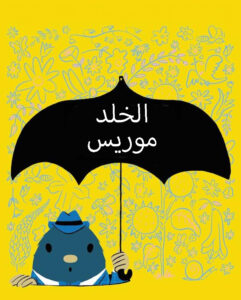 Maurice the Mole
Maurice the Mole 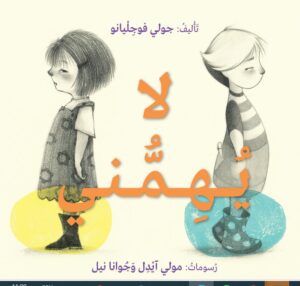 I Don’t Care
I Don’t Care  My Terrible Bag
My Terrible Bag  Where did Zaatar Disappear?
Where did Zaatar Disappear? 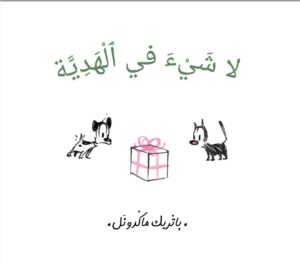 The Gift of Nothing
The Gift of Nothing 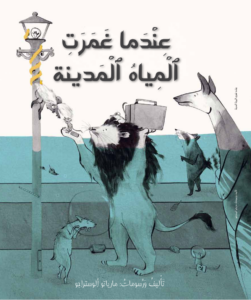 When Water Flooded the City
When Water Flooded the City 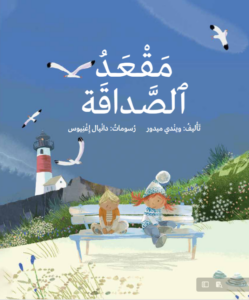 Friendship Bench
Friendship Bench 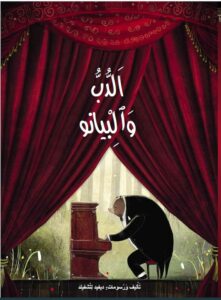 The Bear and the piano
The Bear and the piano 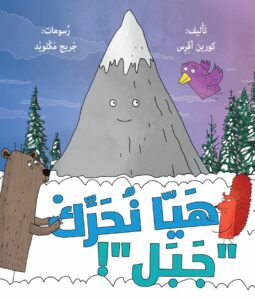 Move Mountain
Move Mountain 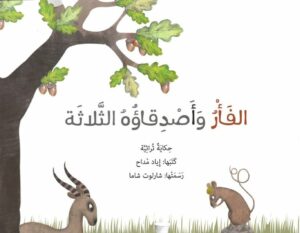 The Mouse and his Three Friends
The Mouse and his Three Friends 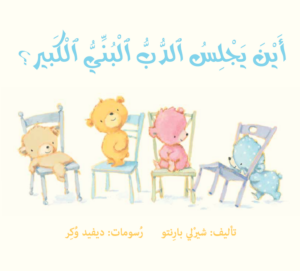 Bears on Chairs
Bears on Chairs  A Monster wrote me a Letter
A Monster wrote me a Letter 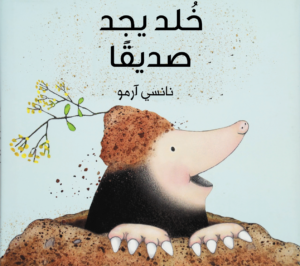 A Friend for Mole
A Friend for Mole 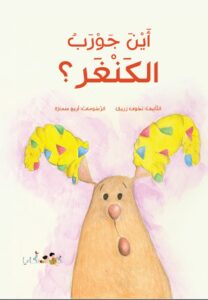 The Kangaroo’s Sock
The Kangaroo’s Sock 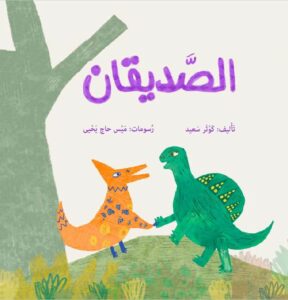 Two Friends
Two Friends 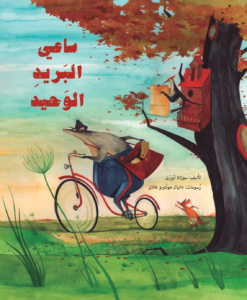 The Lonely Mailman
The Lonely Mailman 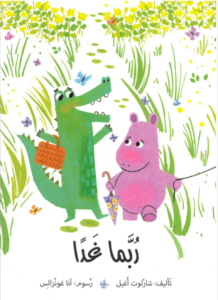 Maybe Tomorrow
Maybe Tomorrow 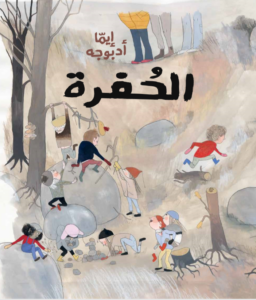 The Hole
The Hole 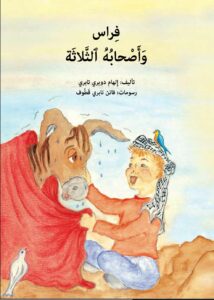 Firas and his Three Friends
Firas and his Three Friends 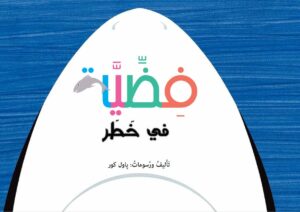 Caspion, Beware!
Caspion, Beware! 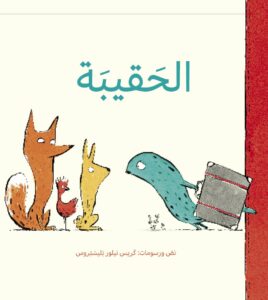 The Suitcase
The Suitcase  Hiding Heidi
Hiding Heidi 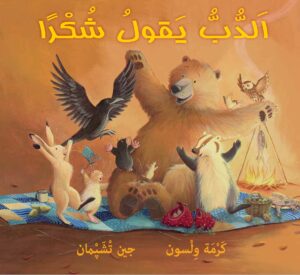 Bear says thanks
Bear says thanks 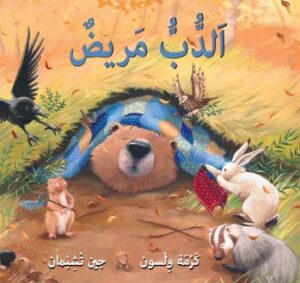 Bear Feels Sick
Bear Feels Sick 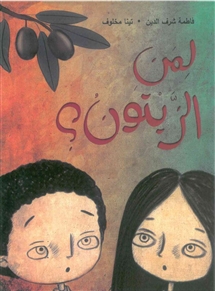 Whose Olives?
Whose Olives? 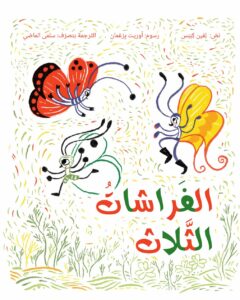 Three Butterflies
Three Butterflies 
